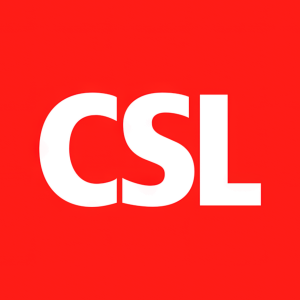The European Academy of Neurology (EAN) and Peripheral Nerve Society (PNS) Task Force Has Strongly Recommended Subcutaneous Immunoglobulin (SCIg) for CIDP Maintenance Treatment
Rhea-AI Summary
CSL Behring announced an update from the EAN and PNS Task Force on CIDP treatment guidelines, recommending subcutaneous immunoglobulin (SCIg) for maintenance therapy. This marks the first inclusion of SCIg in the guidelines since 2010, reflecting its evidence-based efficacy. The guideline specifies that SCIg dosage should be individualized and advises against its use for induction treatment. Hizentra, CSL Behring's SCIg product, remains the most prescribed treatment for CIDP. This update is expected to empower physicians in managing CIDP, enhancing patient convenience and potentially reducing treatment side effects.
Positive
- SCIg is now strongly recommended for CIDP maintenance treatment per updated EAN/PNS guidelines.
- Hizentra remains the most prescribed SCIg for CIDP, enhancing market position.
- The update enables greater patient convenience with self-administration options.
Negative
- None.
Insights
Analyzing...
KING OF PRUSSIA, Pa., Aug. 9, 2021 /PRNewswire/ -- Global biotherapeutics leader CSL Behring today announced that the European Academy of Neurology (EAN) and Peripheral Nerve Society (PNS) Task Force has released an update to its guideline on diagnosis and treatment of Chronic Inflammatory Demyelinating Polyradiculoneuropathy (CIDP). The new guideline includes evidence-based recommendations for the use of subcutaneous immunoglobulin (SCIg) for maintenance treatment in CIDP.
Previously released in 2010 prior to the approval of SCIg for the treatment of CIDP, this guideline update is significant as it marks the first update to include an evaluation for SCIg. The Task Force strongly recommended the use of SCIg for maintenance treatment in CIDP while expressing no preference for either intravenous immunoglobulin (IVIg) or SCIg for maintenance treatment in CIDP. The guideline was published online in both the Journal of the Peripheral Nervous System and the European Journal of Neurology. The presentation highlighting the new guideline can be viewed here.
"The updated guideline should provide physicians with the confidence to recommend subcutaneous immune globulin as an effective, safe and evidence-based treatment option for their patients," said Peter Van den Bergh, M.D., Professor of Neurology, FEAN, FAAN, Coordinator of the Neuromuscular Reference Centre at the University Hospital Saint-Luc in Brussels, Belgium. "SCIg can offer CIDP patients the convenience of self-infusing their treatment at home with no IV access necessary, and potentially fewer systemic side effects."
CSL Behring's Hizentra® (Immune Globulin Subcutaneous [Human]
"We commend the EAN and PNS Task Force for updating the guideline to include additional treatment options that may benefit the CIDP community," said Andrew Koenig, D.O., Global Therapy Area Lead, Global Medical Affairs, Immunology, CSL Behring. "At CSL Behring, we are driven by our promise to provide patients with the best possible care, and we believe this recommendation allows CIDP patients to have more control in managing their condition."
The updated guideline also states that the SCIg dose should be tailored according to individual treatment response. Additionally, the EAN/PNS Task Force recommended against using SCIg for induction treatment in CIDP, which is consistent with Hizentra's label, as it states therapy with Hizentra should be initiated 1 week after a patient's last IVIg infusion.
About CIDP
CIDP is a rare autoimmune disorder that affects the peripheral nerves (those outside the brain and spinal cord) and damages the protective covering of the nerves known as the myelin sheath. This may result in numbness or tingling, muscle weakness, fatigue and other symptoms. CIDP effects can worsen over time, leading to significant activity limitations and a decreased quality of life. CIDP can occur at any age and is more common in men than in women. The GBS|CIDP Foundation estimates that approximately 30 percent of CIDP patients progress to wheelchair dependence if not treated.
About Hizentra®
Registered in more than 60 countries, Hizentra is the world's most prescribed subcutaneous immunoglobulin for primary immunodeficiency (PI), with more than 9.3 million exposures worldwide since 2010. It has a proven track record of safety, efficacy, and tolerability. Hizentra was first approved by the U.S. FDA in March 2010, followed by the European Medicines Authority (EMA) in 2011, for the treatment of patients with PI. Hizentra was approved by both the U.S. FDA and EMA in 2018 for the treatment of adults with CIDP to prevent relapse of neuromuscular disability and impairment. For more information about Hizentra, including the full prescribing information, www.hizentra.com.
IMPORTANT SAFETY INFORMATION
Hizentra®, Immune Globulin Subcutaneous (Human),
- Primary immune deficiency (PI) in patients 2 years and older
- Chronic inflammatory demyelinating polyneuropathy (CIDP) in adults
WARNING: Thrombosis (blood clots) can occur with immune globulin products, including Hizentra. Risk factors can include: advanced age, prolonged immobilization, a history of blood clotting or hyperviscosity (blood thickness), use of estrogens, installed vascular catheters, and cardiovascular risk factors.
If you are at high risk of blood clots, your doctor will prescribe Hizentra at the minimum dose and infusion rate practicable and will monitor for signs of clotting events and hyperviscosity. Always drink sufficient fluids before infusing Hizentra.
See your doctor for a full explanation, and the full prescribing information for complete boxed warning.
Treatment with Hizentra might not be possible if your doctor determines you have hyperprolinemia (too much proline in the blood), or are IgA-deficient with antibodies to IgA and a history of hypersensitivity. Tell your doctor if you have previously had a severe allergic reaction (including anaphylaxis) to the administration of human immune globulin. Tell your doctor right away or go to the emergency room if you have hives, trouble breathing, wheezing, dizziness, or fainting. These could be signs of a bad allergic reaction.
Inform your doctor of any medications you are taking, as well as any medical conditions you may have had, especially if you have a history of diseases related to the heart or blood vessels, or have been immobile for some time. Inform your physician if you are pregnant or nursing, or plan to become pregnant.
Infuse Hizentra under your skin only; do not inject into a blood vessel. Self-administer Hizentra only after having been taught to do so by your doctor or other healthcare professional, and having received dosing instructions for treating your condition.
Immediately report to your physician any of the following symptoms, which could be signs of serious adverse reactions to Hizentra:
- Reduced urination, sudden weight gain, or swelling in your legs (possible signs of a kidney problem).
- Pain and/or swelling or discoloration of an arm or leg, unexplained shortness of breath, chest pain or discomfort that worsens on deep breathing, unexplained rapid pulse, or numbness/weakness on one side of the body (possible signs of a blood clot).
- Bad headache with nausea; vomiting; stiff neck; fever; and sensitivity to light (possible signs of meningitis).
- Brown or red urine; rapid heart rate; yellowing of the skin or eyes; chest pains or breathing trouble; fever over 100°F (possible symptoms of other conditions that require prompt treatment).
Hizentra is made from human blood. The risk of transmission of infectious agents, including viruses and, theoretically, the Creutzfeldt-Jakob disease (CJD) agent and its variant (vCJD), cannot be completely eliminated.
The most common side effects in the clinical trials for Hizentra include redness, swelling, itching, and/or bruising at the infusion site; headache; chest, joint or back pain; diarrhea; tiredness; cough; rash; itching; fever, nausea, and vomiting. These are not the only side effects possible. Tell your doctor about any side effect that bothers you or does not go away.
Before receiving any vaccine, tell immunizing physician if you have had recent therapy with Hizentra, as effectiveness of the vaccine could be compromised.
Please see full prescribing information for Hizentra, including boxed warning and the patient product information.
You are encouraged to report negative side effects of prescription drugs to the FDA. Visit www.fda.gov/medwatch, or call 1-800-FDA-1088.
You can also report side effects to CSL Behring's Pharmacovigilance Department at 1-866-915-6958.
About CSL Behring
CSL Behring is a global biotherapeutics leader driven by its promise to save lives. Focused on serving patients' needs by using the latest technologies, the company develops and delivers innovative therapies that are used to treat coagulation disorders, primary immune deficiencies, hereditary angioedema, respiratory disease, and neurological disorders. The company's products are also used in cardiac surgery, burn treatment and to prevent hemolytic disease of the newborn.
CSL Behring operates one of the world's largest plasma collection networks, CSL Plasma. The parent company, CSL Limited (ASX:CSL;USOTC:CSLLY), headquartered in Melbourne, Australia, employs more than 27,000 people worldwide, and delivers its life-saving therapies to people in more than 100 countries. For inspiring stories about the promise of biotechnology, visit Vita at CSLBehring.com/Vita and follow us on Twitter.com/CSLBehring.
SOURCE CSL Behring






